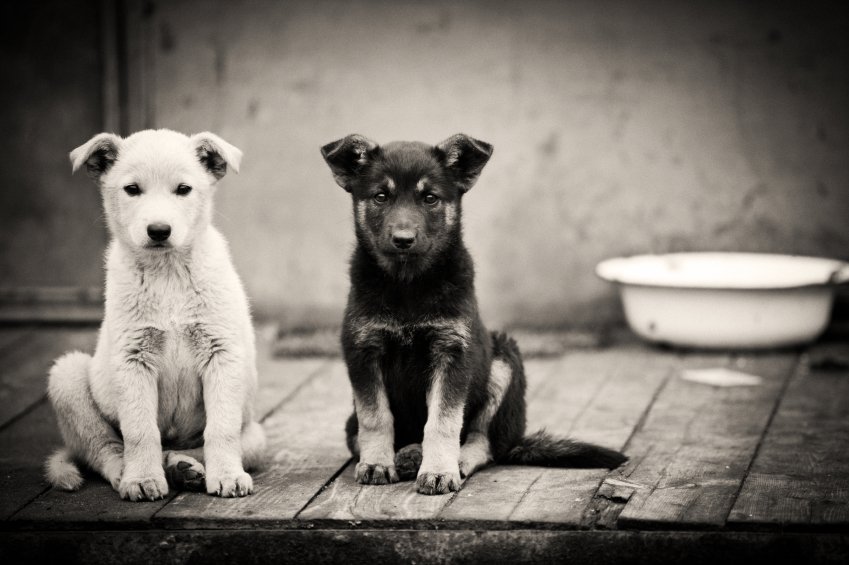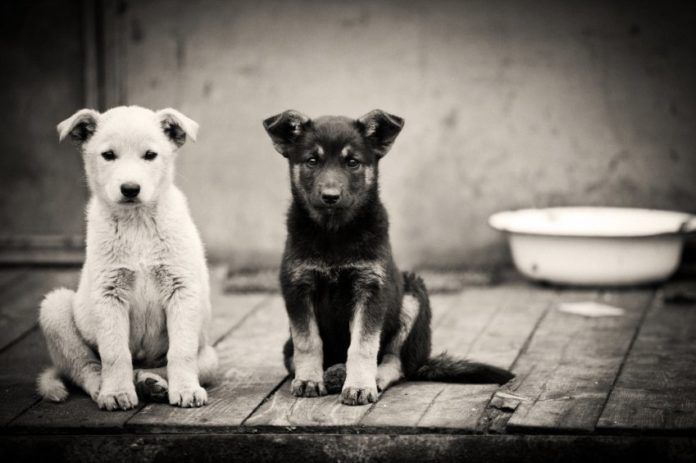We often hear from people who try remedies suggested by a friend or on the Internet. A popular one is fish oil for treating dandruff. Some write that it completely cleared up their dog’s problem, others that it didn’t work at all, and others that they observed mixed results. One reader said, for instance, that fish oil capsules worked at first to control her dog’s dandruff but lost their efficacy — the dandruff came back.
“Dandruff is a complex topic,” says Tufts veterinary dermatologist Lluis Ferrer, DVM, “and many people ask about it.”
They are right to, he says. “If you see dandruff, something is abnormal. You are not supposed to be able to observe it on your dog’s body. Very mild dandruff on black dogs can be acceptable because white flecks on black hair can be a little more prominent. But that’s it. In general, dandruff scales are not seen on healthy dogs.”
What is Dandruff?
Dr. Ferrer refers to “the physiology of dandruff” — the turnover of cells on the skin — that leads to the problem. Consider that the skin is composed of three different layers: the deepest layer, called the hypodermis, or subcutaneous layer; the middle layer, or dermis; and the top layer, known as the epidermis.
The top layer is composed of a few layers of cells by itself. These cells are called keratinocytes, and they are completely renewed in this external sheet every three to four weeks, just as in people. They are born in the deepest part of this top layer of skin. Afterwards, they go through a process of maturation, accumulating a proteinaceous substance called keratin. Then the cells die and are sloughed off.


“The process takes place microscopically,” Dr. Ferrer explains. “You’re not supposed to be able to see it. Each cell gets released individually — millions of cells every day. And new ones replace them. It’s all very well regulated by many different molecules and substances called cytokines — a very precise mechanism to keep skin flexible, hydrated, and to allow hairs to grow.”
But in certain situations, Dr. Ferrer points out, “the process can be disturbed. And then you have abnormal scaling. The scales, or scaffolding, of different cells stick together to create small sheets of their own that remain on the skin surface rather than sloughing off individually, and those scaly sheets of skin cells are what owners see.
Why Does Dandruff Form on Dogs?
There are three main reasons for dandruff.
Genetic predisposition. Many genetic “defects” target the process of hair cell sloughing, Dr. Ferrer says. In the case of dandruff, some of the proteins that regulate the lives of hair cells are deficient or simply do not work properly, and then skin renewal is abnormal. A genetic glitch in the renewal of the epidermis is called primary scaling, congenital scaling, or ichthyosis. “Ichthys” is Greek for “fish,” which, of course, have scales.
“In the U.S. right now,” Dr. Ferrer says, “a number of golden retrievers have some type of genetic ichthyosis. Owners usually notice it in the dog’s first year of life, when she is three or four months old. She’ll start to present with big grey-to-white scales, especially on the abdomen where there is less hair, which allows the dandruff to be seen more prominently. But it can also be seen all over the trunk. In the case of the goldens, there’s a deficiency in an enzyme responsible for causing the skin cells to move apart; the cells remain attached longer than normal.”
Dietary imbalance. The process of proper skin cell turnover is “very demanding from a nutritional point of view,” notes Dr. Ferrer. “Imagine, the dog has to renew her entire epidermis every three to four weeks. She needs a lot of good-quality protein and essential fatty acids. If something is missing or out of balance with other nutrients, there can be abnormal renewal of the skin surface. In certain breeds of dogs with fast growth — great Danes, Doberman pinschers, Rhodesian ridgebacks — there might be zinc deficiencies that can interfere with proper skin cell turnover, especially if they are fed an imbalanced home-cooked diet. The result: the cells tend to remain in big sheets or plates that can be seen with the naked eye as dandruff.
Underlying disease. As a result of a number of disease states, the epidermis might be renewing too quickly. It’s called accelerated renewing. The skin cells, before maturing completely and releasing from the skin individually, become attached to each other in small plates. “They don’t have time to disconnect from each other,” Dr. Ferrer says. The small plates, or sheets, then remain on the skin surface and are seen by the naked eye.
An underlying disease is actually the most likely reason for a dog’s dandruff, ahead of genetics or nutritional imbalances. It always takes the form of inflammatory skin disease. When the skin is inflamed, it throws off the entire process of epidermis renewal. But the inflammation can stem from different problems.
In some cases, it’s an allergy that causes skin inflammation and the attendant accelerated epidermal turnover. A flea allergy would be one example. In other dogs, scabies — a reaction to mites that burrow into the outer layers of the skin — is the culprit. Whatever the cause, the too-quick cell turnover occurs on top of the inflammation. (Think of psoriasis in people.)
Most often, an owner will not be able to see any skin inflammation under the dog’s hair. It’s chronic, but it’s mild, so the only sign is the dandruff.
Finding the Reason for Your Dog’s Dandruff
If you see dandruff on your dog, you have to find out whether it’s primary scaling, meaning that it’s caused by a genetic disorder, or brought about by a disease process or perhaps a nutrient deficiency. The veterinarian will first check for inflammation on the skin or lesions — breaks in the normally smooth skin surface. You may even be able to see abnormalities on the skin yourself. Look for papules or little scabs under the hair coat. Seeing your dog scratching or itchy also suggests that there is an underlying disease causing the dandruff.
If the doctor finds or confirms inflammation or a skin surface that’s out of whack, he will then search for the cause, often an allergy, as we said above, and treat that — or send you to a veterinary dermatologist to find and treat the cause if it is elusive. Allergies are not always easy to pin down. Once the problem is tended to, the dandruff will go away as it is secondary to the underlying condition.
If the skin is fine and the vet does not suspect a mild condition that would cause dandruff without inflammation, the next step would be to consider whether a nutrient deficiency or imbalance is at work. “In general,” says Tufts veterinary nutritionist Cailin Heinze, VMD, “higher-fat diets can improve skin quality. And the omega-3 fatty acids in fish can decrease inflammation and have been shown to potentially be beneficial in allergic dogs. However, depending on the base diet and the dose of omega-3s, these supplements may also be adding quite a bit of fat. Any positive effect on the skin might not be because of the type of fat, but the total amount.”
Some nutritional deficiencies can lead to scaly coats, too, Dr. Heinze says. But she notes that “true deficiencies are uncommon and typically due to inappropriate diets such as unbalanced home-cooked diets.” In other words, if you’re feeding your dog a commercial food made by a reputable company, and the package has a nutritional adequacy statement from the Association of American Feed Control Officials (AAFCO) either for maintenance (adult dogs) or for growth (puppies), it would be unlikely for a dog’s dandruff to be attributable to a lack of a vitamin, mineral, or other nutrient in a dog’s diet unless the dog has problems with the metabolism of that nutrient (such as because of a genetic mutation).
After ruling out inflammatory diseases and nutritional deficiencies, the disease is considered a primary seborrhea or an ichthyosis, that is, a genetic disorder. If that’s the case, Dr. Ferrer says, not too much can be done. “We may increase the bathing to remove the scales, or recommend medicated dog shampoos formulated to help take care of different types of dandruff (dry, oily). But because in such cases the scaling is not the result of a disease or a nutritional problem, we don’t really worry about it. It will not hurt the dog.”





